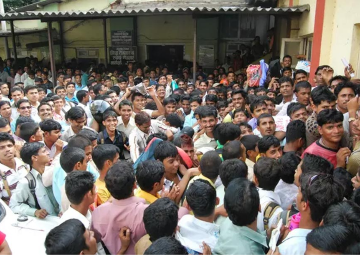
While health was always a priority under the Millennium Development Goals (MDGs), the new Sustainable Development Goals (SGDs) have taken it a step further and made provisioning of healthcare absolutely imperative for nations.
SDG Goal 3 states, “Ensure healthy lives and promote well-being for all at all ages.” This, along with the 16 other goals, directly or indirectly impact health. One key focus area of the health component under SDGs is Universal Health Coverage (UHC). This is crucial since, every year, approximately 400 million people are deprived of one or more essential health services, and 150 million people around the world undergo great financial hardships due to high out-of-pocket expenditure.
The prime objective of UHC is to extend health services of sufficient quality and effectiveness to all, with special focus on the “worst-off” groups in a country. Speaking at a panel on “Future of Universal Health Coverage in Asia: Learning from Each Other,” panellists agreed that while countries across the world are striving towards UHC, only a handful have successfully rolled out schemes to truly achieve it. The rest of the world continues to grapple with challenges of finding a balance between allocating necessary resources, deriving political will and ensuring high standard of health services.
Like other democracies of the world, public health is a state subject in India, thereby making it the government’s responsibility to provide quality healthcare services to its people. One of the biggest challenges for low-and middle-income countries such as India to achieve the health goal, however, is the failure to develop a sustainable financial model for healthcare. Budgetary constrains hold such countries from meeting the requirements. It is, therefore, important that the centre maintains a flexible financing model to help states meet this budget gap. Further, given the size and diversity of India, with its multiplicity of healthcare challenges, it would be impossible to resolve any issue by simply implementing a one-size-fits-all policy.
Moderating the session, Former Secretary of Health and Family Welfare Dr. Sujatha Rao said, “Universal health coverage is really a health system issue. It is not a scheme, it is not a programme, it is not a vertical set of technical guidelines that can simply be implemented by some doctors or a facility. It has much to do with all aspects that go into health and well-being.”
A health system issue such as UHC would require a multi-sectoral approach, which would include access to sanitation, water and other basic needs. Further, all key stakeholders and players—from the public and private sectors—must be involved in framing a realistic model for the country. Since the private sector is, at present, the largest provider of healthcare services in the country, the government must take steps not only to regulate but also to create innovative public-private partnership models that help in building a robust UHC system.
An important step in laying the groundwork for implementing UHC would be to list the different healthcare services packaged under the UHC system. This would require the creation of a comprehensive database of all prevalent diseases in the country. As India’s healthcare priorities expand, such a database would help policymakers gain perspective and prioritise. This database will also help the government identify services that require subsidisation under the UHC model; the cost of services, diagnostic techniques and essential drugs prices will need to be taken into account as well. Only by performing such a tedious exercise can the budgetary requirements for UHC be calculated and sources of funding be determined.
While providing health coverage remains a goal for many countries, there are some, such as Thailand, that have managed to successfully achieve it. In 2000, Thailand was undergoing a major health crisis with high under five-mortality rate (most of which were preventable deaths), high out-of-pocket expenses and a large number of uninsured citizens. This pushed approximately 20 percent Thai people into poverty. The introduction of the Universal Coverage Scheme (UCS) in 2001 dramatically reformed the country’s healthcare system and, a decade later, 98 percent of Thai citizens were covered under health insurance schemes. However, it is important to acknowledge that it took several decades to develop the capability and care required for a universal healthcare system in Thailand; and the real work towards UHC actually began in the 1970s when free medical care was made available to poorer sections of the society. The government also froze and reallocated funds from urban hospitals to rural areas to ensure improvement in the primary healthcare system. This was a crucial step given that most developing countries, such as India and Thailand, suffer from weak primary healthcare systems. The most important factors that led to the success of UHC in Thailand were longterm political commitment and a leadership dedicated to the cause, something that has so far been largely absent from the Indian political establishment.
While Thailand may be a great example to learn from, India and Thailand have different challenges. Therefore, merely duplicating the Thai model in India would be foolhardy. An important prerequisite for India’s UHC model would be to establish a sustainable financial system and increase investment in healthcare infrastructure with a focus on primary healthcare system. By adopting a multi-sectoral approach with key stakeholders, the central government should play a leading role in combining efforts across departments, agencies and ministries to provide healthcare for 1.25 billion Indians.
Given India’s vast population and wide geography, public health policy advocate Dr. Suwit Wibulpolprasert believes that if India can demonstrate a successful UHC plan, it would serve a global example.
The views expressed above belong to the author(s). ORF research and analyses now available on Telegram! Click here to access our curated content — blogs, longforms and interviews.




 PREV
PREV


